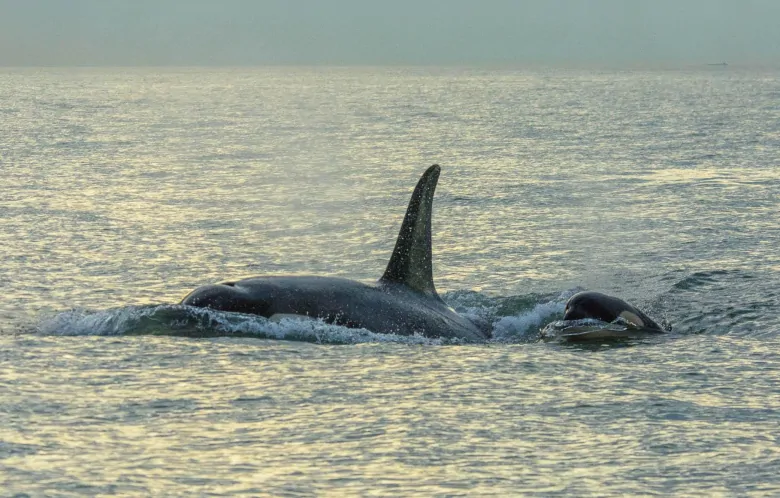Drones let B.C. researchers act as 'fly on the wall' to observe orca behaviour

A group of B.C. researchers have returned from a trip along the coast with a trove of new photos, video and data gathered by studying killer whales from above.
The team of scientists from the University of B.C. spent August and September using drones and other tools to observe the feeding behaviour of northern and southern resident killer whales.
The goal was to explore any connection between the availability of Chinook salmon and the struggles of the southern residents.
Andrew Trites, director the university’s Marine Mammal Research Unit, was the lead researcher on the trip, and said the team is still sifting through the data to analyze the results.
But using drones allowed the scientists to capture “amazing” images and video of the orcas from a new perspective.
“In some respects, we were like this fly on the wall, observing intimate moments between the whales, and got to see them in a way that very few people have ever had the opportunity to do,” Trites said.
“We saw … playful things with a calf slapping the mother on her face with its tail, and the mother pushing the calf.”
He said that after a career spent viewing whales from a boat on the water, he was excited to get a more three-dimensional view of their behaviour.
He was particularly struck by how often the orcas touched each other.
“I don’t think that I’d ever fully appreciated just how tactile the whales are. It’s probably one way that they use to maintain this very strong family bond,” Trites said.
Watch: A northern resident killer whale swims with her calf
Scientists have theorized that a decline in Chinook stocks may be responsible for the poor health of the southern resident population in recent years. The northern residents, meanwhile, are thriving.
The UBC researchers will use the data gathered this summer to compare the food available to the two populations to see how much of a role Chinook are playing in the troubles of the southern residents.

One major worry as the scientists headed out on the water in August was whether they’d even catch a glimpse of the endangered population, Trites said. At the time, the whales hadn’t been spotted in two months.
But when the research vessel left False Creek in Vancouver on day one and rounded the point at UBC, they ran straight into the southern resident orcas of J pod, feeding on salmon heading into the Fraser River.
“We spent two days with them, and we saw many encounters with the whales chasing Chinook salmon and catching Chinook salmon,” Trites said.
He said the scientists hope to be able to release some of the results of their research in the spring.





